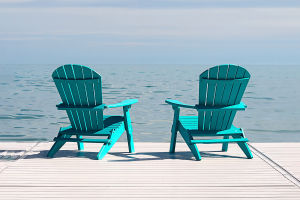In water activities, safety should always come first.
While life jackets are commonly recommended, it's crucial to understand the various types of buoyant equipment available and their roles in water safety.
Contrary to popular belief, many "life jackets" worn during water activities are "buoyant undershirts." These undershirts provide buoyancy without restricting arm movement, making them suitable for swimming and paddling.
There are two main types of life jackets: inflatable and rigid. Rigid life jackets, commonly encountered by the public, are more traditional, while inflatable life jackets, like those used in aircraft emergencies, offer a different design and function.
The design of a life jacket can vary depending on its intended use. For instance, life jackets used on ocean-faring fishing vessels may include features for jumping from heights, while those used at night may have reflective strips for visibility.
Quick-release clasps are also crucial for swift removal in emergencies. Additionally, life jackets come with different buoyancy weight limits, requiring careful consideration when purchasing to ensure suitability for specific activities.
A critical aspect of life jacket design is its ability to quickly turn a drowning victim's body face up in the water even when unconscious and face-down. A qualified life jacket should accomplish this within 15 seconds, significantly increasing the chances of survival.
Aside from life jackets, another standard lifesaving equipment is the "torpedo buoy." This elongated buoy, made of durable, buoyant materials, is worn diagonally under the armpits while swimming.
Like a lifebuoy, it can be used for self-rescue or aiding others in distress. Events like the annual Sun Moon Lake crossing mandate participants to carry torpedo buoys, highlighting their importance and practicality.
Despite the prevalence of life jackets and torpedo buoys, many choose not to wear them during water activities, especially if they know how to swim.
Torpedo buoys may be cumbersome, and some open water areas lack lifesaving equipment. In such situations, improvisation becomes crucial in case of drowning accidents.
Swimming rings and waterproof bags are commonly brought along during water outings that can serve as makeshift flotation devices. While swimming rings lack the formal certification of life preservers, they provide some buoyancy and are easily accessible.
Attaching a length of floating rope to a swimming ring allows it to be thrown to a drowning person for assistance. Similarly, when inflated and securely sealed, a waterproof bag can provide enough buoyancy for an adult to float. Tying a rope to the bag enables it to be thrown to someone needing rescue.
Moreover, other items like coolers, often used to store food and drinks, can also double as flotation devices. Though not specifically designed for this purpose, their buoyancy can still aid rescue efforts.
Regardless of the equipment available, ensuring it reaches the drowning person is paramount. It's best to aim for placement next to their shoulder or within proximity downstream, as this increases the likelihood of them grabbing onto it.
While life jackets and torpedo buoys are essential lifesaving equipment, improvisation with readily available items like swimming rings, waterproof bags, and even coolers can prove invaluable in emergencies.
With proper knowledge and preparedness, everyone can play a role in promoting water safety and preventing drowning accidents.


